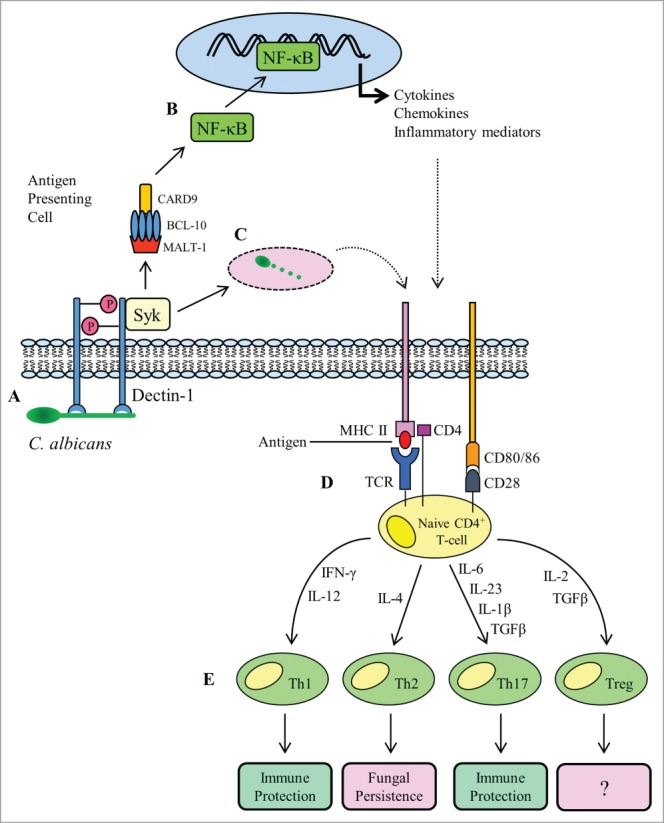Figure 1.

Overview of adaptive T-cell responses to Candida albicans infection. A fungal PAMP (β-glucan) engages with the PRR dectin-1 (A), stimulating receptor phosphorylation and recruitment of the spleen tyrosine kinase (SYK). The association of dectin-1 with SYK activates assembly of the CARD complex (CARD9, BCL-10 and MALT-1), which stimulates nuclear translocation of the transcription factor NF-κB (B). The NF-κB transcription factor drives the expression of pro-inflammatory cytokines and co-stimulatory molecules required during antigen presentation. As well as signaling and gene transcription, activation of dectin-1 and recruitment of SYK triggers phagocytosis of C. albicans (C). The phagocytosed fungus is degraded in the phagocytic compartment and fungal antigens are loaded onto MHC II molecules for presentation to naive CD4+ T-cells. Recognition of antigen by a T-cell receptor (TCR) in the presence of co-stimulation from CD28 and CD80/86 (D) is followed by cytokine-directed polarization to one of the 4 known Th subsets (E). Th1 and Th17 cellular responses confer immune protection, whereas Th2 responses are considered refractory to fungal clearance.
